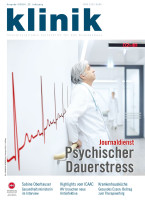Melden Sie sich bitte hier kostenlos und unverbindlich an, um den Inhalt vollständig einzusehen und weitere Services von www.medmedia.at zu nutzen.
Die globale Dimension der nichtviralen sexuell übertragbaren Infektionen
Ambulatorium zur Diagnose und Behandlung sexuell übertragbarer Krankheiten, MA 15, Gesundheitsdienst der Stadt Wien
Literatur
1 WHO, World Health Organization. Global strategy for the prevention and control of sexually transmitted infections: 2006– 2015. 2007
2 Kenyon C, Buyze J, Colebunders R, Classification of incidence and prevalence of certain sexually transmitted infections by world regions. International journal of infectious diseases : IJID : official publication of the International Society for Infectious Diseases 2014; 18:73–80
3 Nielsen L, Classifications of Countries Based on their Level of Development: How it is Done and how it could be Done. International Money Fund 2011
4 De Hulsters B et al., Geographical focusing: an intervention to address increased risk for sexually transmitted diseases during repatriation and resettlement in post-war Mozambique. Sexually transmitted infections 2003; 79(1):77
5 Hankins CA et al., Transmission and prevention of HIV and sexually transmitted infections in war settings: implications for current and future armed conflicts. Aids 2002; 16(17):2245– 2252
6 Rahman M et al., Intimate partner violence and symptoms of sexually transmitted infections: are the women from low socio-economic strata in Bangladesh at increased risk. International journal of behavioral medicine 2014; 21(2):348–357
7 Rawls J, A Theory of Justice, rev. ed. Harvard University Press 1999
8 Murray CJ et al., Disability-adjusted life years (DALYs) for 291 diseases and injuries in 21 regions, 1990–2010: a systematic analysis for the Global Burden of Disease Study 2010. Lancet 2012; 380(9859):2197–2223
9 Owusu-Edusei K, Jr et al., The estimated direct medical cost of selected sexually transmitted infections in the United States, 2008. Sexually transmitted diseases 2013; 40(3):197–201
10 Barham L, Lewis D, Latimer N, One to one interventions to reduce sexually transmitted infections and under the age of 18 conceptions: a systematic review of the economic evaluations. Sexually transmitted infections 2007; 83(6):441–446
11 Aral SO, Utility and delivery of behavioural interventions to prevent sexually transmitted infections. Sexually transmitted infections 2011; 87 Suppl 2:ii31–33
12 Auvert B et al., Randomized, controlled intervention trial of male circumcision for reduction of HIV infection risk: the ANRS 1265 Trial. PLoS medicine 2005; 2(11):e298
13 Londish GJ, Murray JM, Significant reduction in HIV prevalence according to male circumcision intervention in sub-Saharan Africa. International journal of epidemiology 2008; 37(6):1246– 1253
14 Muzny CA et al., Added Benefit of Nucleic Acid Amplification Testing for the Diagnosis of Trichomonas vaginalis Among Men and Women Attending a Sexually Transmitted Diseases Clinic. Clinical infectious diseases: an official publication of the Infectious Diseases Society of America 2014; 59(6):834–841
15 Unemo M, Holistic actions are essential to combat the global public health burden of non-viral sexually transmitted infections: challenges and future perspectives. Expert review of anti-infective therapy 2014; 12(6):649–651


